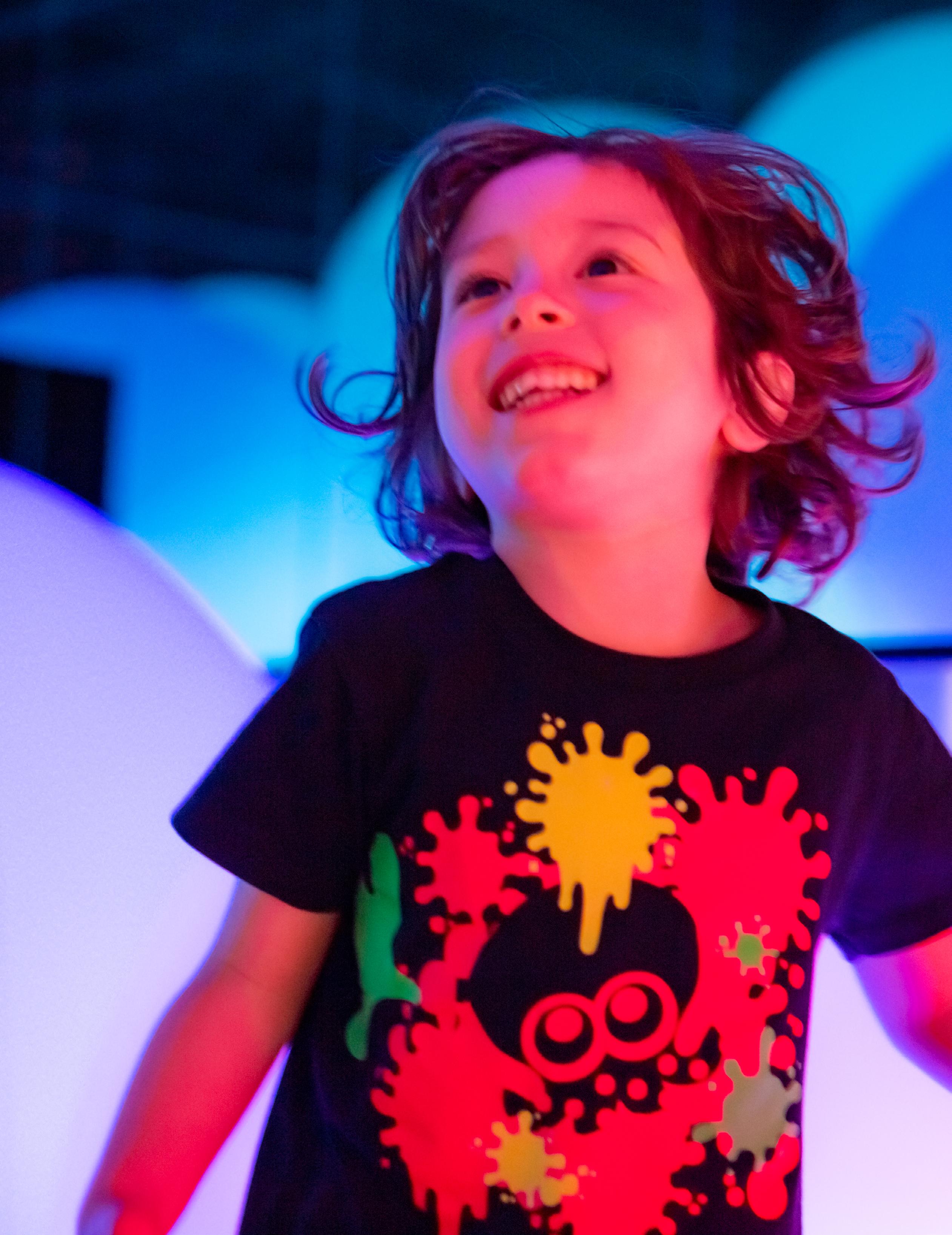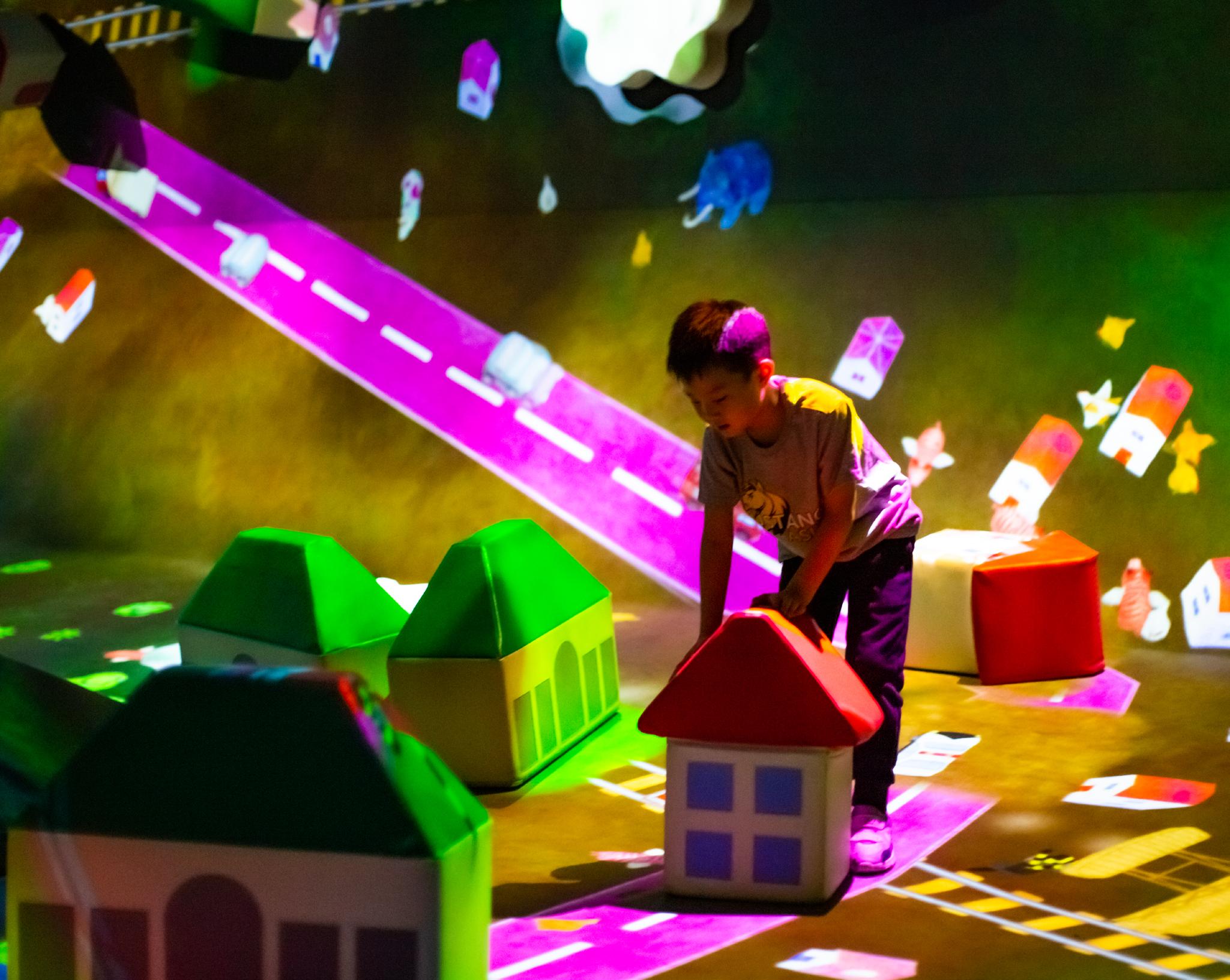
3 minute read
Borderless Learning
Borderless Learning
Early Learning Center Director Christy Carrillo reveals how our kindergartners explored the interactive digital art museum teamLab Borderless

Imagine a colorful interactive world where your movements and actions change the environment around you. A place where you can draw a sea creature and see it come to life on the wall or create a lizard that moves around the floor. A space filled with color, light and laughter. That place is teamLab’s Borderless and at the end of the school year in May, our kindergarten classes were invited by the Mori building to be their guests at the digital art museum.
When the children were inside, exploring each area, it really came to life with their imagination. There are areas where they were physically involved in altering and engaging with their environment. There were areas where the environment was responsive to the children as they moved, touched and played. They were also able to see their influence on an environment.
One of the things that made the museum so magical for our children was how physically active and responsive it was. One area they enjoyed was the slide. The children were able to physically engage in a process of moving things, affecting things but all the while, having fun as they slid
down the slide. Another popular area was the trampoline. With multiple jumps the black hole would get bigger and planets and space things would move around for them. The balloon room was another area that was really engaging for the kids because as they went through, things would move in response to their own motion and in response to other children’s movements. They were able to touch, push, pull and see what that response was. The application to real life is that you never act on your own. Anything that you do will have an impact and things other people do will have an impact on you and so, through the museum experiences, they were able to experiment and play with that in a very fun way but it’s still a learning that will stay with them for a long time.
At this stage in their development, children learn through physical response, physical reaction and so another area which they found very engaging was the hanging swing area. It was almost like an obstacle course. Developmentally it tested not only their balance but also their executive function skills as they worked through how they wanted to negotiate the different steps and the directions that they could take.

One room that really sparked the children's imagination was a room that was hidden off the balloon room. There was a narrow doorway to go in and as we walked in the children started to notice that it was a full environment with its own community. There were animated little creatures walking along the perimeter of the room and with no direction the children started following, watching and noticing what they were doing. Then the children started to pick up different objects that were available to them, ladders, mushrooms, trees and clouds and place these in different areas. When they did that they were able to recognise what impact that had on this community and on the environment. I could see the questions forming in their mind as they, for example, placed a ladder and notice that the little creatures would go up the ladder. And then the question of where are these creatures going to go? And there were no rules, so they could put a cloud, a tree, a mushroom and depending on what they placed

there, the creatures had different responses. So through a process of experimentation and then conversation and collaboration, groups of children started to come together to create communities and when the communities got too big, you started to notice the children would then create an alternative path for these little creatures. So again, a ladder would come down or a tree and they started creating, recreating, moving. What that did for the children was help them realise how they impact the world around them and it helped them to form questions or hypothesis, act on those, test them and then move onto their next hypothesis. It was extremely response, very creative as an environment and for the children, very inspiring and engaging.
We’d really like to thank the Mori building for giving our children this incredible, eye opening experience. It really brought their learning and sense of curiosity to life.










